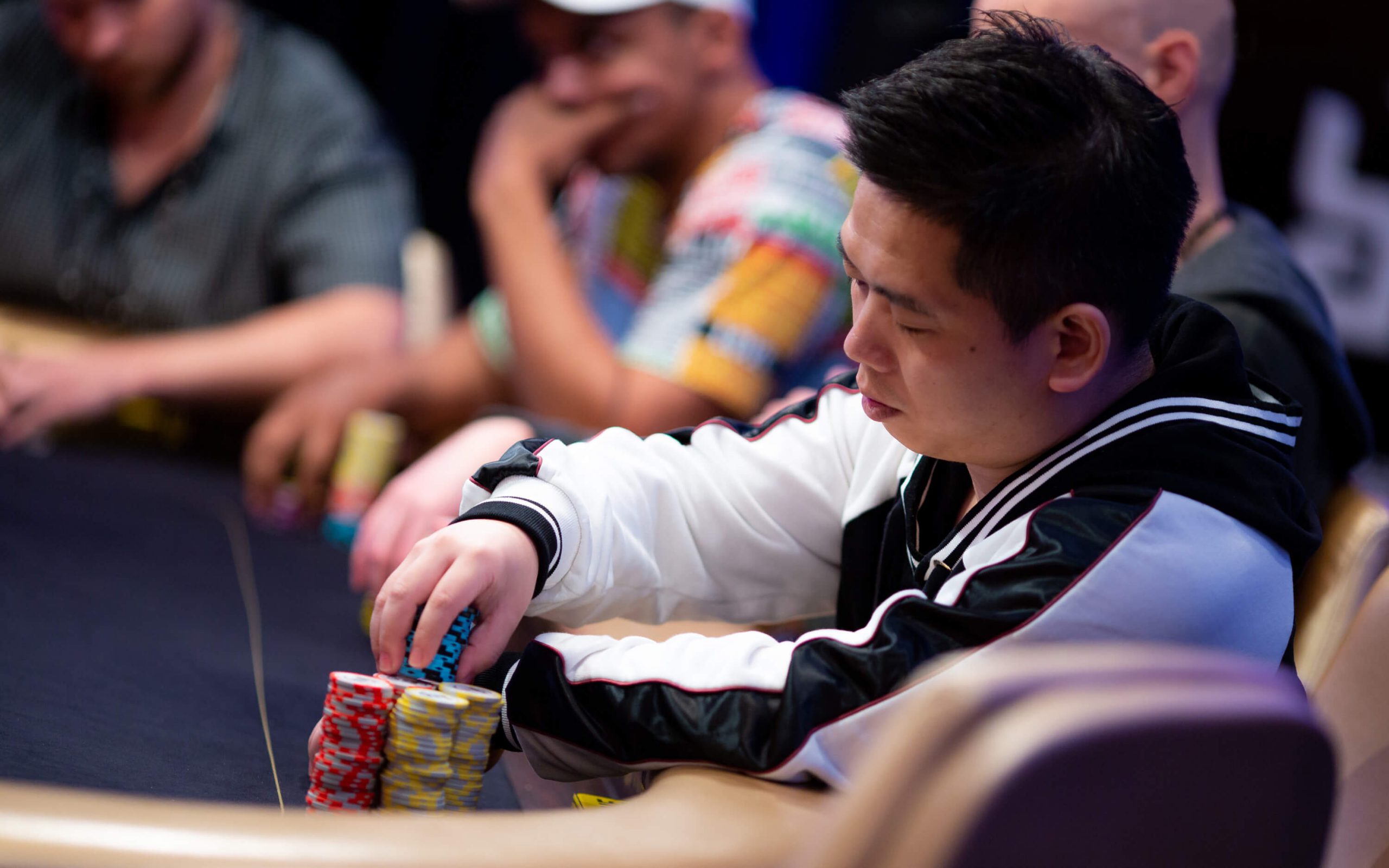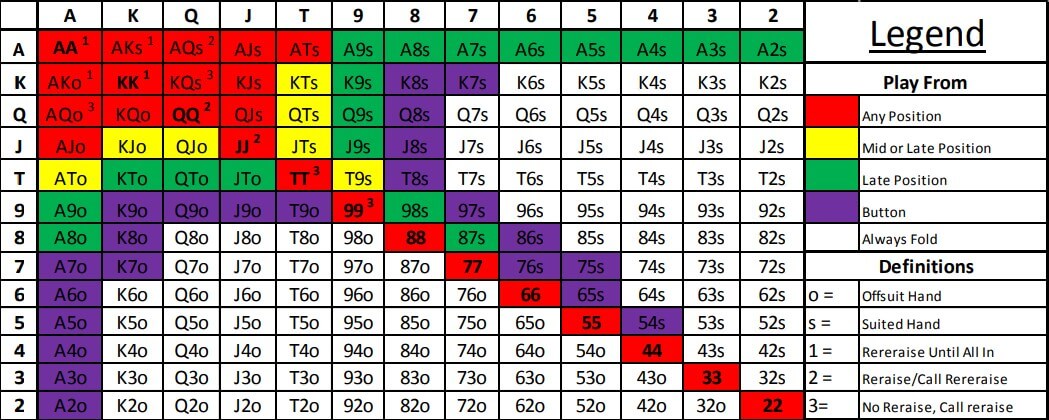Texas Holdem Mississippi Straddle
The Mississippi Straddle is a type of straddle. Contrary to a traditional straddle, which is committed by the player under the gun and, in some cases, subsequent players behind the under the gun. Usually, a Mississippi straddle can be made from any position, although some house rules only permit the button or the player to the right of the button to place a Mississippi straddle. Like a live straddle, a Mississippi straddle must be at least the minimum raise. Action begins with the player to the left of the straddle.

If you’ve ever played a Texas Holdem cash game, you probably know that there are several variations. We’ve spoken about bounty before, however today we’re going to be discussing two other betting practices that you can try. Note – neither of these are legal in tournament play, and are generally considered bad plays.
Both these options are available during the blind phases of play, which means, before the cards are dealt and must be declared when acting.
Traditional Straddle:
Straddling are optional bets placed during this period. A traditional straddle is only available for the player to the immediate left of the big blind, basically the first player to act. That player has the option to call a straddle bet, which would require them to pay double the big blind. As mentioned, this bet is done prior to the cards being dealt to the players. This now forces all subsequent players to pay the new minimum of that round, which is double the big blind.

To explain, let’s say the game is $1/$2, no limit. Before the cards are dealt, the two players paying the blinds would put their respective bets, in other words, from right to left, it would be:
- Seat 1 player – Button
- Seat 2 player – Small Blind ($1)
- Seat 3 player – Big Blind ($2)
- Seat 4 player – Straddle player 1 ($4+)
- Seat 5 player – Straddler 2 ($8+)
- Seat 6 player – Straddler 3 ($16+)
- Seat 7 player – first to act.
As the above list suggests, there can be more than one straddle, but it can only exist if the next player immediately after the straddler continues the bet, and as mentioned, the bet needs to be double or more the previous bet. Also, please note, if you’re straddle betting, that means the next person in that chain will be the first to act once the cards are dealt, meaning, seat 1 had the button, and as per the example above, then seat 7 would be the first to act, once cards are dealt with a cost of $16+ to call (depending on what the last straddle bet was), unlike a traditional game, where seat 4 would be the first to act, with $2 to call.
Again, per standard rules, the round of betting would occur until all bets are made, and then the flop would be dealt.
Mississippi Straddle:
This optional bet is available to any player that is not under the gun or on the blinds. In other words, this is available for any player not the small or the big blind, and if it’s done by the player under the gun (seat 3), then it’s just a traditional straddle.
A Mississippi, as mentioned, can be done by any player other than those mentioned above, and can be done by the player on the dealer button. Minimum bet would have to be double the big blind, and as per the traditional straddle, subsequent players can straddle on top of the mississippi player, but they would have to be immediately after the last straddler. You cannot skip players to continue a straddle streak – this goes with both variations.
Also, per the traditional straddle, the player to the left of the last straddle gets to go first, once all the cards are dealt. It would look something like this:

- Seat 1 player – Button
- Seat 2 player – Small Blind ($1)
- Seat 3 player – Big Blind ($2)
- Seat 4 player – under the gun
- Seat 5 player
- Seat 6 player – Mississippi Straddler 1 ($4+)
- Seat 7 player – Straddler 2 ($8+)
- Seat 8 – First to act.
The caller in seat 8 would have to call with whatever the last bet was, in this case $8 or raise the bet by doubling it.
Can you Straddle after 3rd street?
Yes, you can, but that would require declaring that you’re betting blind, and would still require that player to bet at least the minimum bet, which would be the big blind. Again, if you choose to do this, all subsequent straddlers have to be to the immediate player after the last straddler and the bet needs to be doubled the last. The first to act once the community card is dealt would be the player that ended the straddling streak.
What’s the benefit of straddling?
If you’re at a table of tight players, straddling scares players out of hands faster, since the requirement to stay in would be double the big blind, to start. It’s not good in situations where everyone is playing fast and loose, since there’s a likely chance that folks will buy in, whatever the cost, just to play.
Straddling is generally a poor playing practice that’s generally used to spice up the game, and is only beneficial in rare situations, and only practical if you’re ahead at the table as a way to bully players.
If you do choose to play it that way, watch your competition first to see if it’s worth throwing bets blindly into the pot, otherwise you’re just giving it away.
When a player decides to straddle in Texas hold'em or any other poker game, they are putting in twice the big blind before the cards are dealt.
Blinds, like antes, are bets made before the players look at their cards; the amounts are set before the game. Usually the big blind equals the smallest bet possible, while the little blind is half or a third of the big blind. The little blind commonly is made by the player to the dealer's left; the big blind is placed by the next player on the left.
Usually, it is the player to the left of the big blind who straddles. All players following must call or raise the amount of the straddle bet.

A 'Live' Straddle
When the straddle is 'live,' it acts like the big blind. If there are no raises, the player on the straddle will have the option of raising when it is their turn once more. Dealers are generally required to announce if a live straddle is in play. If the straddle is not live, it is merely a dark raise and the straddler receives no option if everyone simply calls.
Most straddles in turn, or directly after the big blind, are live and allowed in nearly every poker game that uses blinds. Straddles out of turn are often disallowed. If a game advertises a 'Mississippi Straddle,' it allows straddles from the dealer. Some games allow straddles from any position and for any amount, which leads to wild games.
Straddling Rules at Casinos
Texas Holdem Mississippi Straddle Rules
Casinos often impose rules on straddling. Las Vegas casinos generally don't allow the bet. If straddling is allowed, the most common rule is that it is only permissible from one position, usually the 'under the gun' position left of the big blind. Limits may be set on how much you can place as your straddle bet. If you plan to use the straddle as an option, study the casino rules so you won't attempt a disallowed move.
Should You Straddle in Texas Hold'em?
Texas Holdem Mississippi Straddle Position
When you're playing Texas hold'em and have the option of posting a straddle, should you? You'll hear a variety of pros and cons. Here are some considerations:

- In general, the answer is no. The only advantage to straddling is that you get to act last during the first round of betting. But you've made a blind and if you're raised, you'll need a pretty lucky hand to be able to call. It's usually a waste of money.
- First exception: If you're playing a lower limit hold'em game than you'd like, straddling is a way to basically double the betting from the start. If you feel straddling takes players out of their comfort zone and makes the majority of players fold, it could work to your advantage.
- Major exception: If a Mississippi Straddle is allowed, it's not necessarily a bad move to use it when you're in the button position. It gives you an enormous advantage because you will have the last position that round, and it encourages the big blind to fold if that player has poor cards.